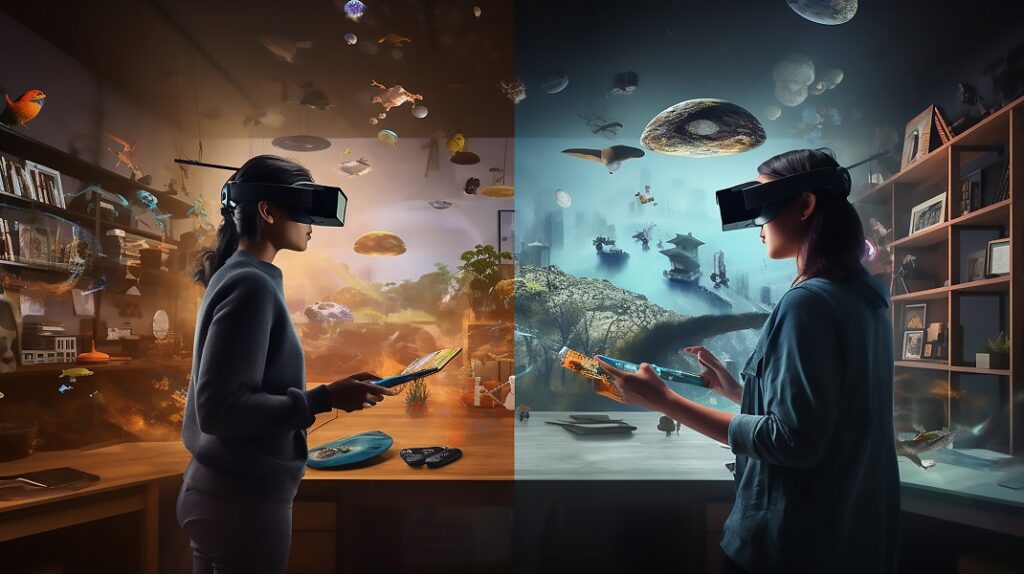Augmented reality and virtual reality are two technologies that continue to influence our lives in different ways. AR enhances our natural vision of the real world while VR transports users into an entirely virtual world and blocks out the real one.
As these two continue to emerge and intersect with one another, understanding their differences is important. In this blog post, we will explore in what exactly differentiates these technologies and in which areas they are currently applied most.
Specifically, we’ll look at key aspects like visual experience, level of immersion, type of content and hardware used. We aim to break down the distinctions between AR and VR in a clear and straightforward manner.
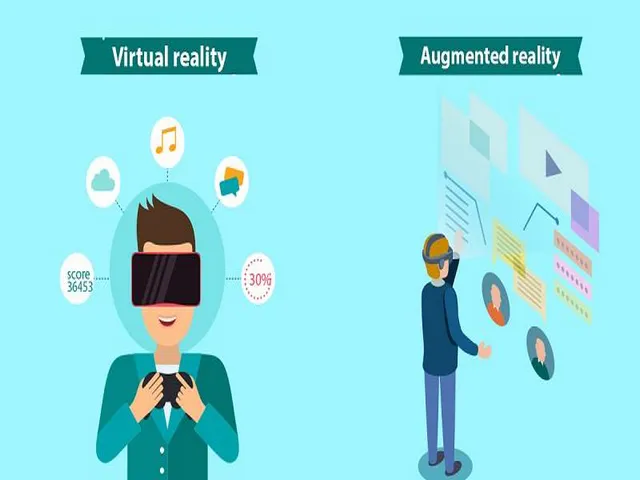
By the end, you will have a firm grasp of these concepts and how they are both revolutionizing sectors like education, medicine, design, and more. So, let’s get started.
What is VR (Virtual Reality)
Virtual reality focuses on fully immersing users in an artificial 3D environment and blocking out the real world. Through VR headsets like the Oculus Quest, users can transport themselves to digital worlds and experience a high level of presence.
The technology relies on advanced graphics rendering to create real-time, 360 degree views that update quickly based on the wearer’s movements. In a VR setting, there is an estimated 90-120 degrees of field of view, nearly matching natural human vision.
International Data Corporation predicts that worldwide spending on VR and augmented reality will reach $72.8 billion in 2024, up from $18 billion in 2020.
Currently, the most popular VR applications include gaming, 360 video, simulations, architectural tours and productivity software. Over 40% of VR users play games regularly using the technology due to its ability to transport them to new immersive environments.
What is AR (Augmented Reality)
Augmented reality enhances the real world by adding computer-generated content like images, sounds and more to our natural environment in real-time. Unlike VR, AR does not fully immerse users in a virtual realm but rather overlays digital objects on the physical world.
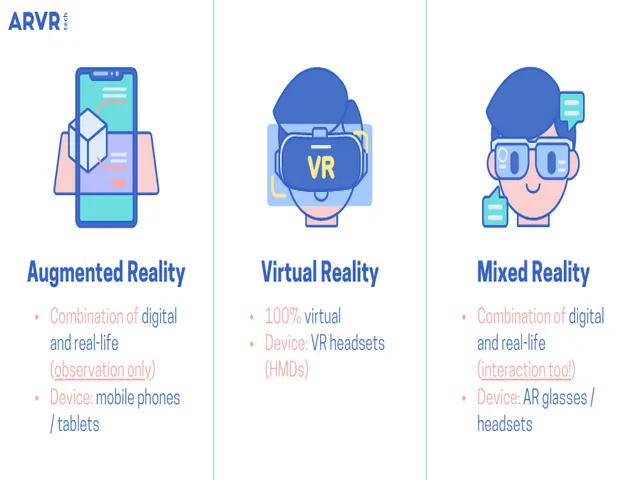
Popular AR devices include smartphones and head-up displays in vehicles that show turn-by-turn directions directly overlaid on the road ahead. Currently, Pokémon GO is the most well-known AR application with over 150 million downloads worldwide to date.
Games are a leading category for AR but other major areas seeing growth include industrial applications, retail visualizations, and navigation tools. AR brings new dimensions to e-commerce by enabling product previews in any environment through just a smartphone camera.
Augmented Reality (AR) vs. Virtual Reality (VR) What’s the Difference?
Augmented and Virtual realities have certainly gained prominence in both the consumer and commercial industries in recent times. Both technologies provide distinctive digital experiences, however they differ markedly in their fundamental approach and application.
While AR expands our natural vision of the world, VR transports the user to a virtual world and obscures the physical. Below we explore some of the key ways in which these technologies diverge when it comes to aspects such as immersion, interaction methods, and use of hardware.
Immersion and User Experience Compared
One of the primary differences between AR and VR lies in the level of immersion they each provide. Virtual reality is designed to be a fully immersive experience that shuts out the real world, transporting the user to a simulated three-dimensional computer environment.
This presents as a highly immersive experience with displacement of physical surroundings. Augmented reality on the other hand enhances natural vision rather than replacing it, allowing digital objects to seamlessly overlay physical surroundings.
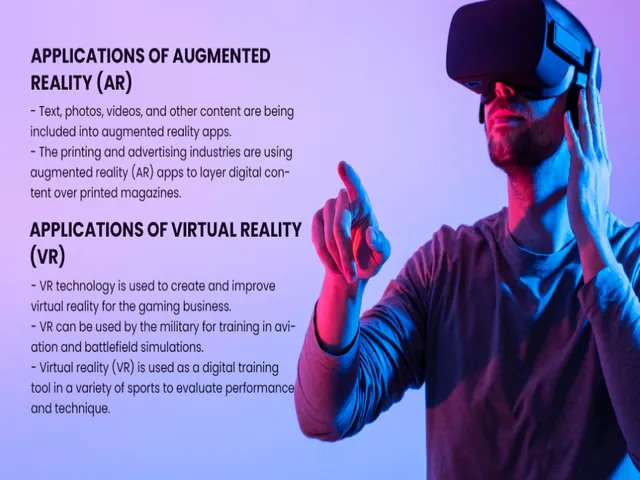
This makes for a less immersive experience than VR that does not obscure reality.
How AR and VR Interact with the Physical World
Another major difference is how each technology interacts with physical space. In VR, the user’s actions translate to responses in the digital world through controllers and movement tracking, but there is no interaction with real objects.
AR on the other hand enables layers of digital information to be placed and interacted with directly over physical environments.
This gives AR applications in fields like maintenance, remote assistance, and industrial inspection where digital models can be directly tied to physical components or spaces.
It also makes AR well suited for contextual advertising and entertainment that mixes the real world with digital enhancements.
Popular Applications and Use Cases of AR and VR
While both augmented and virtual realities make concepts visually graspable, their varying levels of immersion make each suitable for particular types of applications.
As technologies, they open up opportunities across many sectors but each foster experiences that better align with certain fields over others.
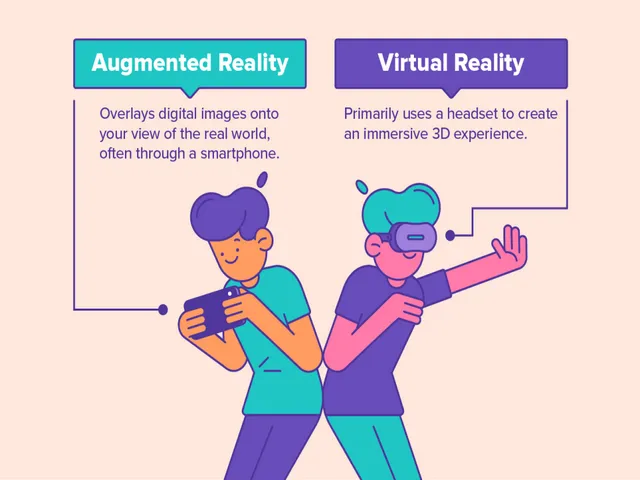
Virtual reality has uniquely enabled applications in areas like simulation and VR gaming. While AR’s ability to layer digital effects on live views has driven adoption in industries like repair, inspection and e-commerce.
Below we outline some example uses of both to highlight this further:
- AR is being used by construction companies to showcase proposed building layouts directly on building sites for clients to visualize.
- Museums employ VR to take visitors inside recreations of historical places and events in an immersive manner.
- Manufacturers utilize AR for remote assistance applications that let on-site staff fix complex machines guided by off-site experts.
- Gamers enjoy immersive VR worlds and games across genres from first-person shooters to virtual board games.
- Architects and designers preview potential building modifications and additions through AR overlays on camera views.
- Medical students perform virtual surgeries with VR for hands-on learning without risks to live patients.
- Car companies showcase vehicle variations and customization options through AR apps.
- VR allows engineers to visit hazardous worksites remotely by placing themselves virtually on location.
- Pilots practice simulations of realistic emergency scenarios using VR headsets and controls.
- VR arcades and theme parks transport groups to virtual places together for shared experiences.
The Pros and Cons of Augmented Reality (AR) and Virtual Reality (VR)
When it comes to immersive technologies, both Augmented Reality (AR) and Virtual Reality (VR) offer unique benefits and challenges. These two technologies, though often compared, serve vastly different purposes and have varying levels of interaction with the real world.
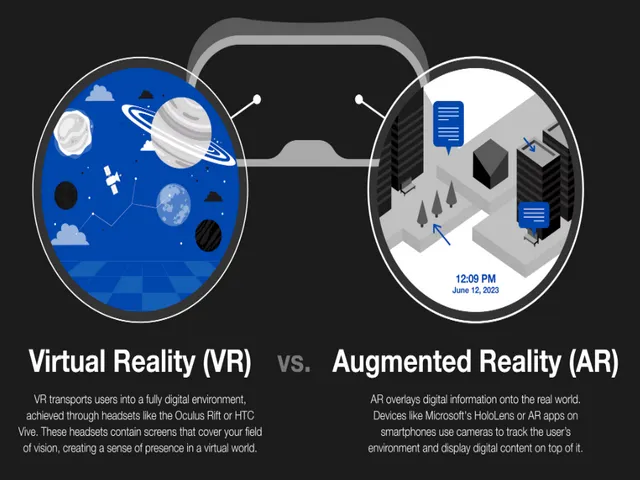
AR overlays digital information onto the physical world, enhancing the user’s real-world environment. In contrast, VR creates an entirely simulated experience, immersing users in a fully digital environment.
Both technologies have their strengths, but they also come with limitations that can affect their adoption depending on the application. Below is a list of some of the most significant pros and cons of AR and VR technologies.
AR (Augmented Reality) Pros and Cons
| Pros | Cons |
| Enhances real-world environments while keeping users connected. | Limited precision in object recognition and interaction. |
| Requires less expensive hardware. | Can cause visual clutter with too many virtual objects. |
| Useful across various industries like healthcare and education. | |
| Improves training and safety through real-time data overlays. | |
| Scalable across devices like smartphones and smart glasses. | |
| Personalized content based on user location and preferences. | |
| Helps users remain aware of their physical surroundings. |
VR (Virtual Reality) Pros and Cons
| Pros | Cons |
| Provides a fully immersive experience. | Requires expensive hardware, limiting accessibility. |
| Offers unique gaming and entertainment opportunities. | Can cause motion sickness or disorientation in users. |
| Allows safe exploration of dangerous scenarios. | Requires controlled environments to prevent accidents. |
| Highly effective for training and simulations in various fields. | |
| Improves collaboration in virtual meeting spaces. | |
| Simulates real-life scenarios for professional training. | |
| Enables virtual tourism for distant experiences. |
AR vs. VR: Which Technology is Better for You?
While both augmented and virtual realities have widespread implications, their varying strengths and current limitations point to different optimum applications.
Understanding context-specific needs and goals is paramount in determining whether AR or VR provides best value. Both also remain developmental with rapid changes expected.
The most suitable approach may differ in future as technologies progress in addressing current challenges. Keep visiting the 5thScape Blog as we will continue to offer updates on both AR and VR technologies.
